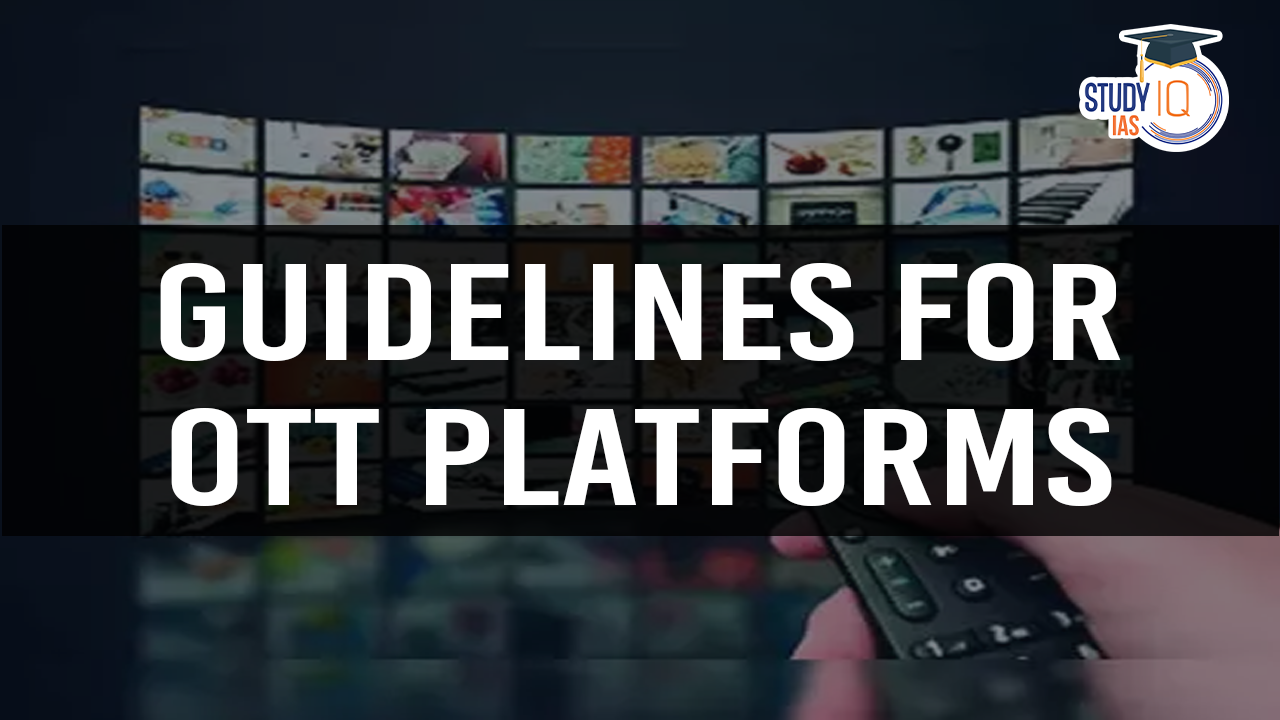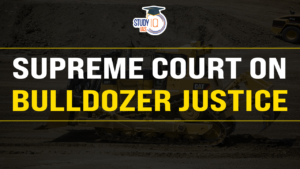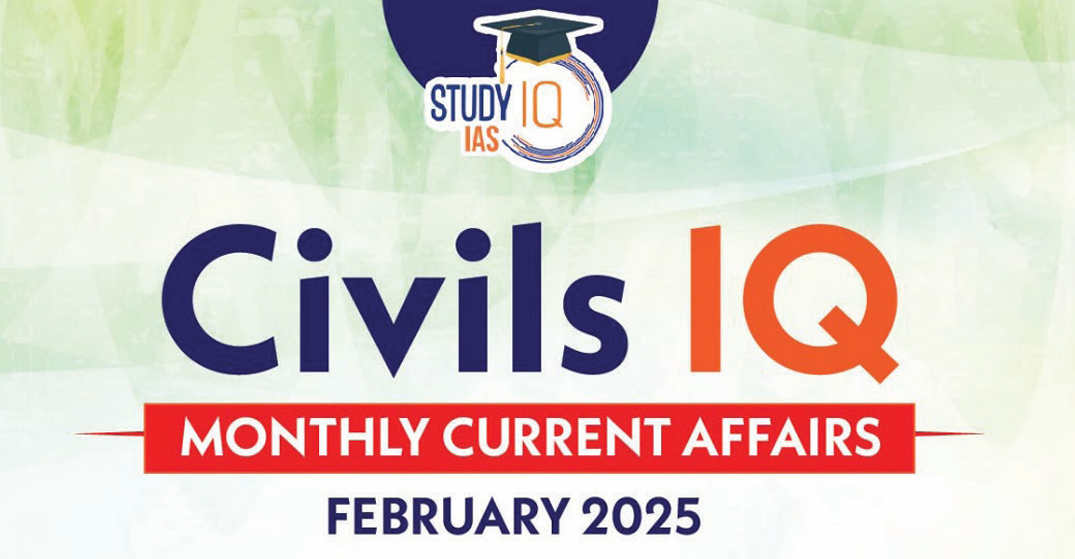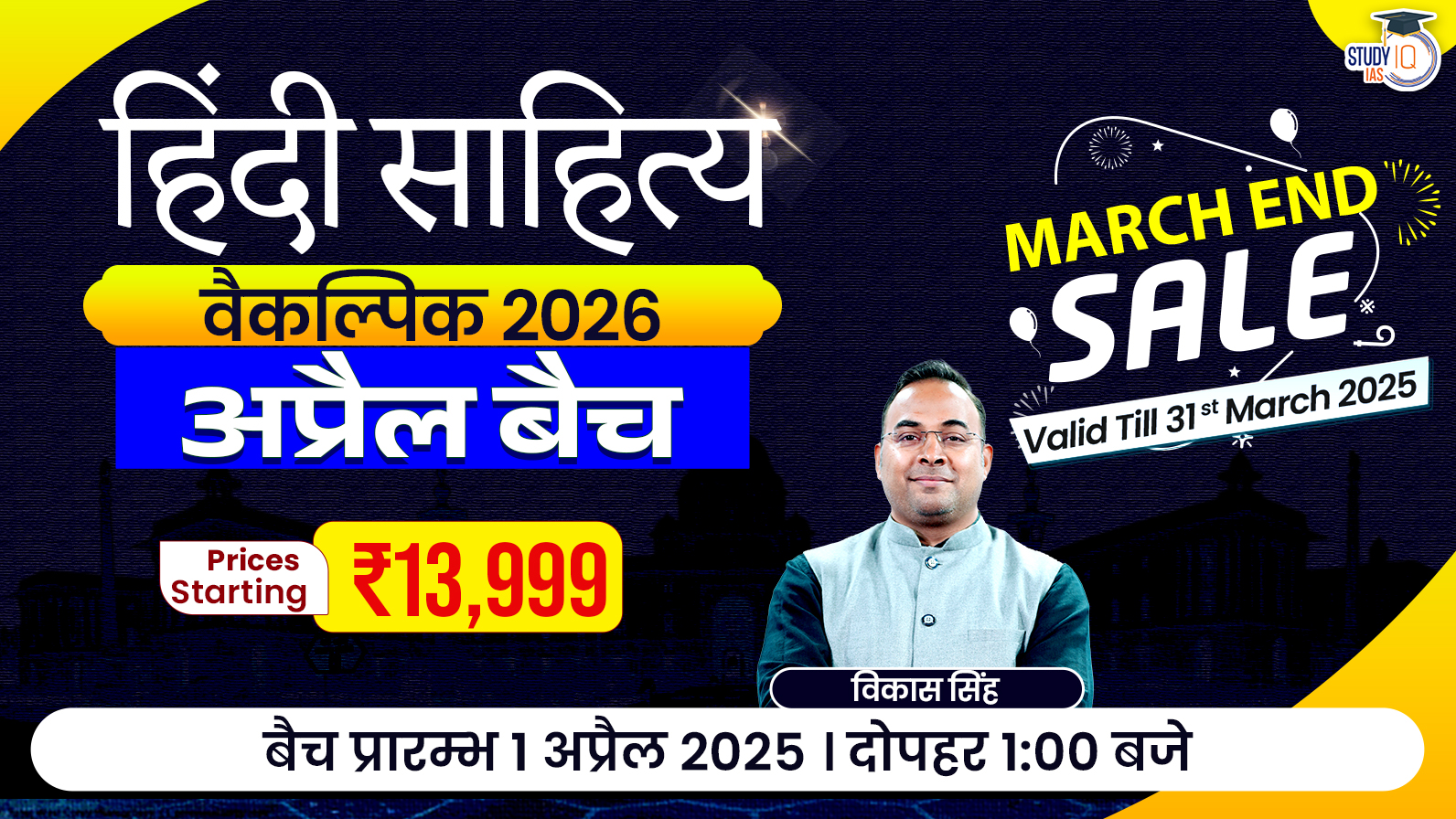Table of Contents
Context: The Union Information and Broadcasting (I&B) Ministry has issued an advisory to Over-the-Top (OTT) streaming services regarding the transmission of content prohibited by law.
Key Directives to OTT Platforms
- Content Classification: OTT platforms must implement age-based classification of content by the IT Rules, 2021.
- Age-Gating for Mature Content: Streaming services must enforce age restrictions on content meant for mature audiences.
- Adherence to Indian Laws: OTT services must ensure that their content does not violate Indian laws related to obscenity, indecency, and child protection.
- The advisory also refers to various Indian laws that prohibit obscene and pornographic content:
- Indecent Representation of Women (Prohibition) Act, 1986 – Prevents the portrayal of women in an indecent manner.
- Bharatiya Nyaya Sanhita (BNS), 2023 – It covers obscenity-related offences.
- Protection of Children from Sexual Offences (POCSO) Act – Protects minors from sexual exploitation and prohibits child pornography.
- Information Technology (IT) Act, 2000 – Regulates digital content and prohibits the publication of obscene or pornographic material online.
Existing IT Rules and Content Regulations
- The IT Rules, 2021 already prescribe age ratings for content on Indian streaming services such as Netflix, Amazon Prime Video, and Disney+ Hotstar.
- OTT platforms are required to have a formal grievance redressal system, structured as a three-tier process:
- First level – The complaint is handled by the streaming platform itself.
- Second level – The issue can be escalated to a self-regulatory body.
- Third level – If unresolved, the complaint can be referred to an inter-departmental committee of the Union government.
- The IT Rules do not completely ban swearing, sex, nudity, substance abuse, or violence, but mandate that such content be appropriately rated for older audiences.
Understanding Over The Top (OTT) Platforms
- OTT or Over The Top Platforms are services that offer viewers access to movies, TV shows and other media directly through the Internet, bypassing cable or satellite systems.
- India’s OTT viewership stands at 43 million people and is projected to rise to 50 million by the end of 2023.
- In India’s regulatory parlance, OTT platforms are called ‘publishers of online curated content’.
- Online curated content is audio-visual content such as films, web series, podcasts etc. made available to the viewers on demand, including but not limited to subscriptions by OTT platforms.
- “On demand” means a system where a user is enabled to access, at a time chosen by them, any content in electronic form, which is transmitted over a computer resource and is selected by the user.
- Popular video-on-demand services in India include Disney+ Hotstar, Amazon Prime Video, Sony LIV etc.
Current Mechanism for OTT regulation in India
- Certain laws such as the Information Technology Act 2000, Indian Penal Code 1861, and Indecent Representation of Women (Prohibition) Act 1986 have been made applicable to the content generated on OTT Platforms.
- New IT Rules 2021: The government has come up with Information Technology (Intermediary Guidelines and Digital Media Ethics Code) Rules 2021 under section 87 (2) of the Information Technology Act, 2000.
Key Provisions Include
- As per the rules, the Ministry of Information and Broadcasting (I&B) shall regulate content on OTT and online platforms.
- The Code of Ethics for online news, OTT platforms and digital media prescribes the guidelines to be followed by OTT platforms and online news and digital media entities.
- Self-Classification of Content: OTT platforms would self-classify the content into five age-based categories: U (Universal), U/A 7+, U/A 13+, U/A 16+, and A (Adult).
- Platforms would be required to implement parental locks for content classified as U/A 13+ or higher, and reliable age verification mechanisms for content classified as “A”.
- India’s approach to OTT regulation can be termed as a light-touch ‘coregulation’ model where there is ‘self-regulation’ at the industry level and a final ‘oversight mechanism’ at the Ministry level.
- A three-level grievance redressal mechanism has been established under the rules with different levels of self-regulation:
- Grievance Redressal Officer: The Publisher shall appoint a Grievance Redressal Officer based in India who shall be responsible for the redressal of grievances received by it.
- Self-Regulatory Body: There may be one or more self-regulatory bodies of publishers. Such a body shall be headed by a retired judge of the Supreme Court, a High Court or an independent eminent person and have not more than six members.
- Oversight Mechanism: The Ministry of Information and Broadcasting shall formulate an oversight mechanism. It shall establish an Inter-Departmental Committee for hearing grievances.
- Also, the Centre looks to regulate the content on digital platforms under the proposed Digital India bill.
Challenges with OTT Regulations
- Freedom of Expression: Excessive and strict regulation can inhibit creative freedom and curtail the scope of artistic expression.
- Low Compliance: The Rules mandate the display of contact details relating to grievance redressal mechanisms and grievance officers on OTT websites/interfaces. However, compliance is very low.
- While the Rules require disclosure of grievance details by publishers and self-regulating bodies, the reporting formats only capture the number of complaints received and decided.
- Jurisdictional issues: Many OTT platforms are based outside India, which makes it difficult to enforce regulations and hold them accountable.
- Ambiguity around content regulation and huge volume: Due to the vastness of online space, the volume of data created is huge and is generated rapidly which remains a concern.
- Privacy Concerns: It is difficult to strike a balance between the need for data and data privacy.
Way Forward
- Establish a National Broadcasting Policy: A national broadcasting policy is essential due to the diverse mechanisms, regulations, and pricing structures employed by various broadcasters, including media broadcasters and OTT platforms.
- Recognize the Distinction between Online and Conventional Content: Acknowledge the fundamental differences between web-based content and traditional media, with web content typically being more liberal and exploring unconventional themes.
- This recognition should lead to a departure from conventional censorship paradigms, fostering innovation and creativity in the digital space.
- Promote Awareness of Regulatory Provisions: Mandate OTT industry associations to conduct periodic awareness campaigns through print and electronic media to inform the public about the grievance redressal mechanism.
- Implement Regular Auditing: Consider the establishment of an independent body responsible for conducting periodic audits. These audits should assess the effectiveness of access controls, age verification mechanisms, and the visibility of grievance redressal details on each OTT platform.
- Engage Stakeholders for Effective Regulation: To address potential bottlenecks, implementation challenges, and prevent potential misuse of regulations, policymakers and stakeholders should maintain ongoing communication and collaboration. This collaborative approach will help create a regulatory framework that is both effective and balanced.


 National Judicial Appointments Commissio...
National Judicial Appointments Commissio...
 Draft Digital Personal Data Protection R...
Draft Digital Personal Data Protection R...
 Bulldozer Justice, Issues and Justificat...
Bulldozer Justice, Issues and Justificat...





















